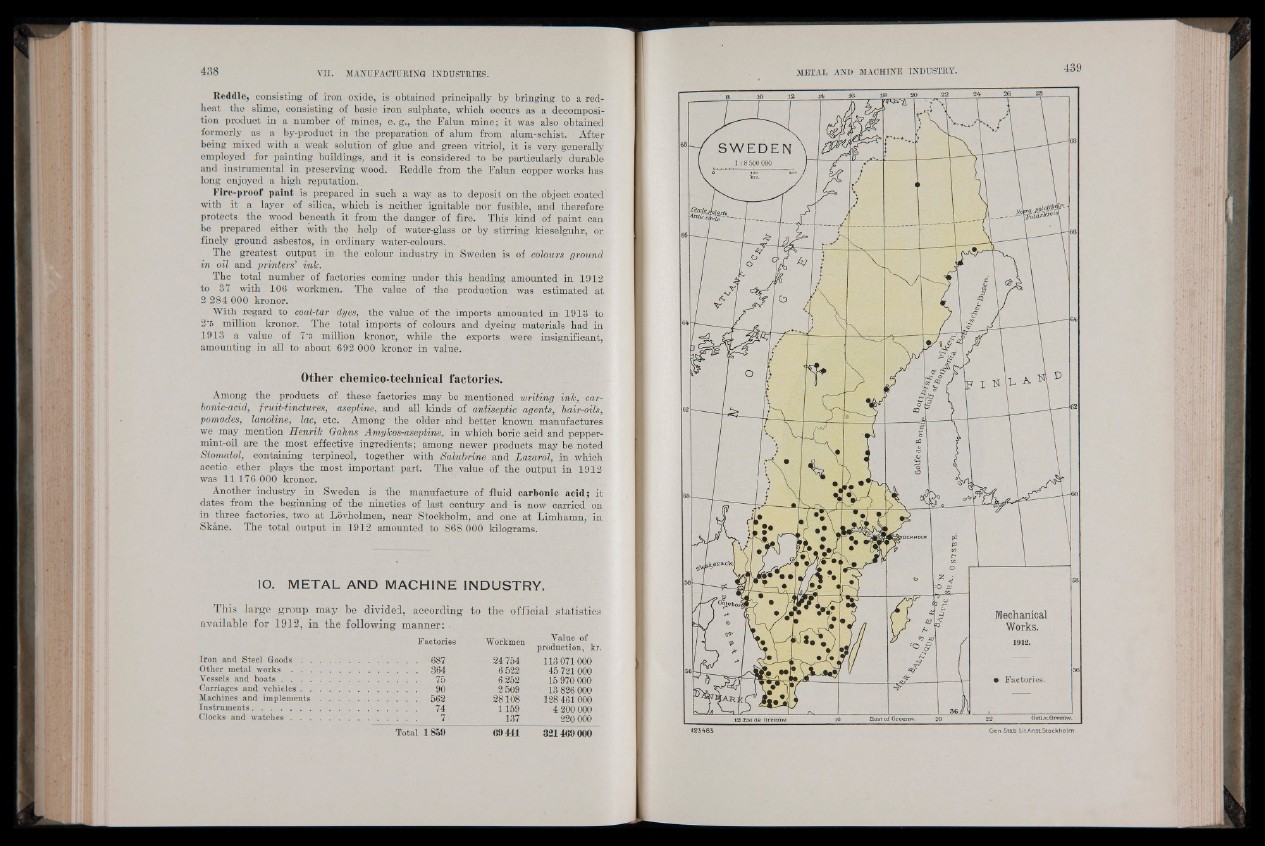
Reddle, consisting of iron oxide, is obtained principally by bringing to a red-
heat the slime, consisting of basic iron sulphate, which occurs as a decomposition
product in a number of mines, e. g., the Falun mine; it was also obtained
formerly as a by-product in the preparation of alum from alum-schist. After
being mixed with a weak solution of glue and green vitriol, it is very generally
employed for painting buildings, and it is considered to be particularly durable
and instrumental in preserving wood. Reddle from the Falun copper works has
long enjoyed a high reputation.
Fire-proof paint is prepared in such a way as to deposit on the.object coated
with it a layer of silica, which is neither ignitable nor fusible, and therefore
protects the wood beneath it from the danger of fire. This kind of paint can
be prepared either with the help of water-glass or by stirring kieselguhr, or
finely ground asbestos, in ordinary water-colours.
The greatest output in the colour industry in Sweden is of colours ground
in oil and printers’ ink.
The total number of factories coming under this heading amounted in 1912
to 37 with 106 workmen. The value of the production was estimated at
2 284 000 kronor.
With regard to coal-tar dyes, the vailue of the imports amounted in 1913 to
2*6 million kronor. The total imports of colours and dyeing materials had in
1913 a value of 7*3 million kronor, while the exports were insignificant,
amounting in all to about 692 000 kronor in value.
Other chemico-technical factories.
Among the products of these factories may be mentioned writing ink, carbonic
acid, fruit-tinctures, aseptine, and all kinds of antiseptic agents, hair-oils,
pomodes, lanoline, lac, etc. Among the older and better known manufactures
we may mention Henrik Oahns Amykos-aseptine, in which boric acid and pepper-
mint-oil are the most effective ingredients; among newer products may be noted
Stomatol, containing terpineol, together with Salubrine and Lazarol, in which
acetic ether plays the most important part. The value of the output in 1912
was 11 176 000 kronor.
Another industry in Sweden is the manufacture of fluid carbonic acid; it
dates from the beginning of the nineties of last century and is now carried on
in three factories, two at Lovholmen, near Stockholm, and one at Limhamn, in
Skane. The total output in 1912 amounted to 868 000 kilograms.
10. METAL AND MACHINE INDUSTRY.
This large group may be divided, according to the official statistics
available for 1912, in the following manner:
Iron and Steel Roods : .
Other metal works . . .
Vessels and boats . . . .
Carriages and vehicles . .
Machines and implements
Instruments........................
Clocks and watches . . .
Factories W orkmen Value of
production, kr.
. 687 24 754 113 071000
. 364 6 522 45 721 000
75 6 252 15 970 000
90 2 509 13 826 000
562 28108 128 461000
74 1159 4 200 000
■ 137 220 000